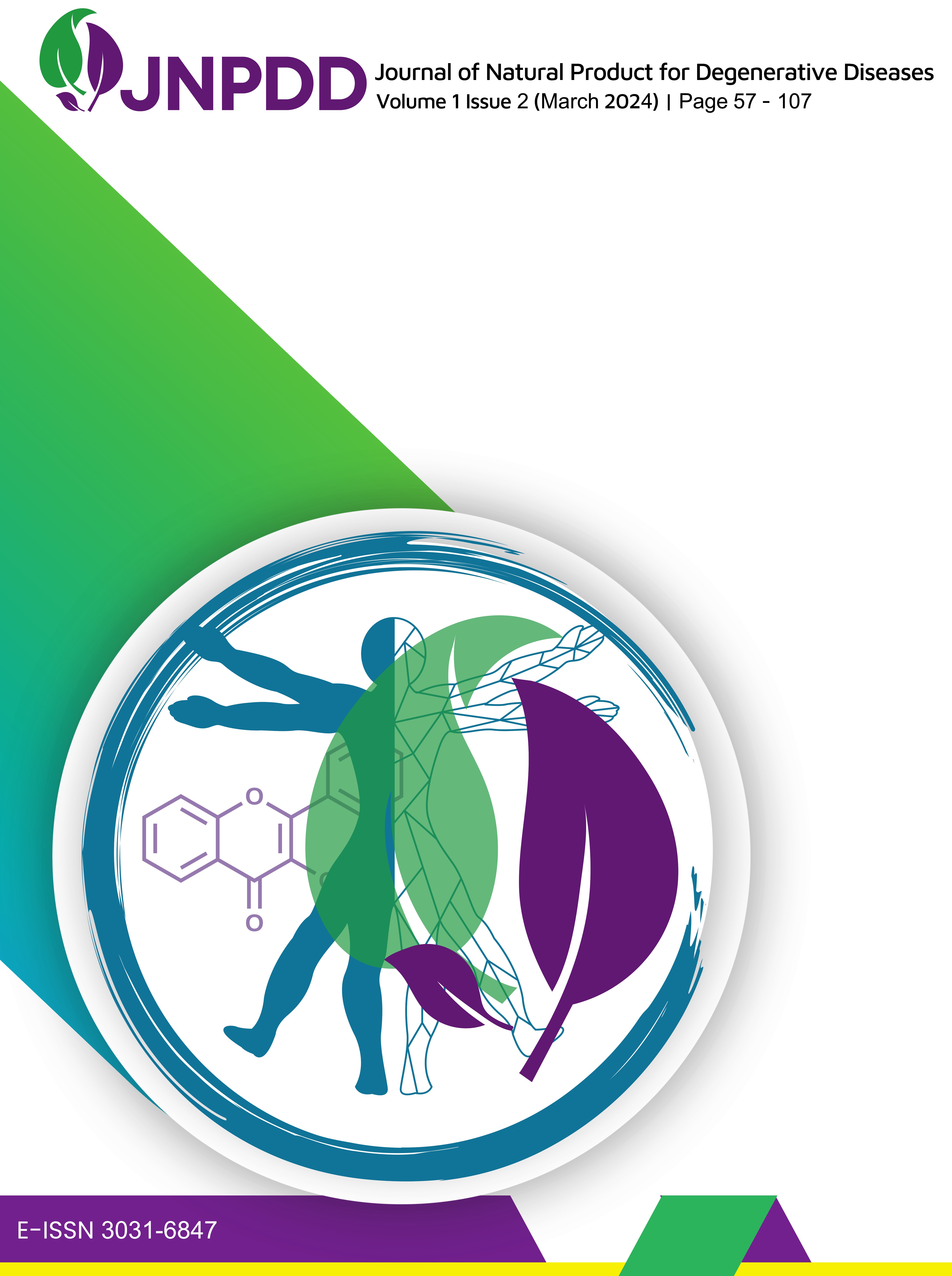Study of The In Vivo Anti-Inflammatory, Antipyretic and Analgesic Effect of The Ethanol Extract Indian Nettle Plant (Acalypha indica Linn)
Abstract views: 225 | PDF downloads: 193
Abstract
The body can experience fever and pain, when inflammation occurs. Indian nettle plant (Acalypha Indica Linn.) are known to contain flavonoid compounds which are thought to have anti-inflammatory, antipyretic, and analgesic effect. This study aims to test the anti-inflammatory, antipyretic, and analgesic effect of the ethanol extract of 70% Indian Nettle plant. Method each test used 5 groups, negative control all given Na CMC 0,5%. Antiinflammatory use rats with Winter method, aspirin 40,43mg/200gBB, the test group dose 70mg/200gBW (I), 140mg/200gBW (II), 280mg/200gBW (III), antipyretics use rats with Brewer's yeast method, aspirin 21,45mg/200gBW, the test group dose 70mg/200gBW (I), 140mg/200gBW (II), 280mg/200gBW (III). Analgesic use mice with the Siegmund method, aspirin 3,10mg/20gBB, the test group dose of 10mg/20gBB (I); 20mg/20gBB (II); 40mg/20g BW (III). Results Kruskall Wallis test, the anti-inflammatory effect significant difference to negative control, p value <0,05. Percentage of inhibition positive control edema and test dosage I, II, and III obtained 34,44%; 18,88%; 21,37%, and 29,61%. The Mann Whitney test, the antipretic and analgesic effects significant difference to the negative control, p value <0,05. The decreased percentage of fever in positive control and dosage I, II, and III test preparations was 3,74%; 2,60%; 2,55%; 3,01%. Inhibition percentage of stretching positive control and test dosage I, II, and III obtained 41,05%; 24,46%; 27,78%; and 33,31%. Conclussion: Wriggling inhibition (analgesic) had the highest presentation dose III 33,31% compare to anti-inflammatory and antipyretic activities, lower than aspirin as positive control 41,05% (p<0,05).
References
Chen Linlin, Huidan D, Hengmin C, Jing F, Zhicai Z, Junliang D, Yinglun L, X. W. L. “Infammatory responses and inflammation-associated diseases in organsTitle”, Oncotarget, vol. 9, no. 6, 2017. pp. 7204–7218. Available https://www.ncbi.nlm.nih.gov/pmc/articles/PMC5805548/
Walter EJ, Hanna-Jumma S, Carraretto M, F. L. “The pathophysiological basis and consequences of fever”, Critical care, vol. 20, no. 20, 2016. pp. 1–10. Available: https://www.researchgate.net/publication/305348791_The_pathophysiological_basis_and_consequences_of_fever
Chekuri S, Vankudothu N, Panjala S, Rao NB, A. R. “Phytochemical analysis, anti-oxidant and anti-microbial
activity of Acalypha indica leaf extract in different organic solventsNo Title”, International Journal of phytomedicine, vol. 8, no. 3, 2016. pp. 444–452. Available: https://hero.epa.gov/hero/index.cfm/reference/details/reference_id/8325385
Rahman MA, Bachar SC, R. M. ‘‘Analgesic and Antiinflammatory activity of methanolic extract of Acalypha indica Linn”, Pakistan Journal of Pharmaceutical Sciences, vol. 23, no. 3, 2010. pp. 256–258. Available: https://pubmed.ncbi.nlm.nih.gov/20566436/
Kumar S, P. A. “Chemistry and biological activities of flavonoids: An overview”, The Scientific World Journal. 2013. Available: https://www.hindawi.com/journals/tswj/2013/162750/
Oktavia F,D. “Phytochemıcal Screenıng, Total Flavonoıd Content, And Antıoxıdant Actıvıty Of Ethanol Extract Plant Selaginella doederleinii”, Jurnal Kimia Riset, vol. 6, no. 2, 2021. pp. 141-153.
Hans GV. Drug discovery and evaluation pharmacology assay. 2nd edition. Springer-Verlag Berlin Heidelberg. 2006.
Santi, T. D. Acute toxicity test and anti-inflammatory effect of methanol extract and n-hexane extract of papaya leaves (Carica papaya L). Faculty of Public Health University Muhammadiyah Aceh. 2015.
Sandhiutami N.M.D, Khairani S, Dewi, R.S, Hakim, Z.R. “Anti-inflammatory and analgetic activitu of musa balbisiana peels in vivo”, Borneo Journal of Pharmacy, vol.5, no.2, 2022. pp. 81-92. Available: https://journal.umpr.ac.id/index.php/bjop/article/view/3169/2478
Khairani, S., Rahayu, L., Sandhiutami, N.M.D., Dewi R.S., Rahmawati, I. “Test-inflammatory and analgesic effect from decoction of bamboo kuning leaves (bambusa vulgaris schard)” Jurnal Kefarmasian Indonesia, vol.19, no.2, 2021. pp 266-271. Available: http://jifi.farmasi.univpancasila.ac.id/index.php/jifi/article/view/875/592
Anwar, O.H, Test antipyretic activity of ethanol srikaya leaves (Annona Squamosa Linn.) againts mice (Mus Musculus) jantan. Universitas Islam Negeri Alauddin Makassar. 2016
Ferdous, M., Rouf, R., Shilpi, J.A., Uddin, S. “Antinociceptive activity of the ethanolic extract of Ficus racemose Linn. (Moraceae), Oriental Pharmacy and Experimental Medicine” Oriental Pharmcy and Experimental Medicine, vol. 8 no. 1, pp. 93–96. 2008.
Scientific working group of the nantural medicines development foundation. Phyto Medika “Guidelines for testing and developing phytopharmaca” Pharmacological Screening, Phytochemical Testing and Clinical Testing”. 1993.
. Oertel BG, L. J.“Clinical pharmacology of analgesics assessed with human experimental pain models: bridging basic and clinical research”, British journal of pharmacology, vol. 168, no.3, pp. 534–553. 2013




